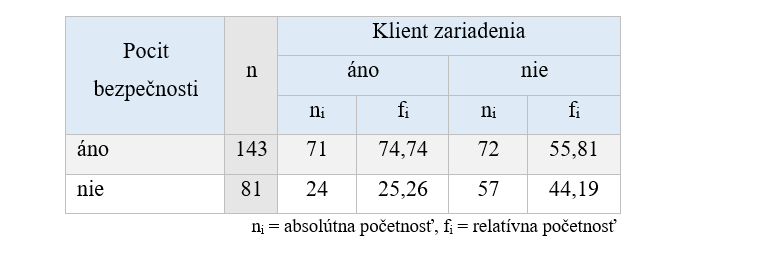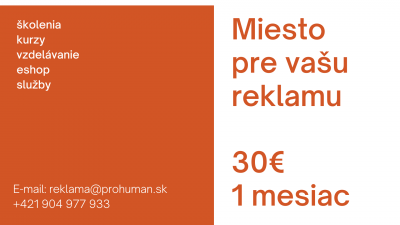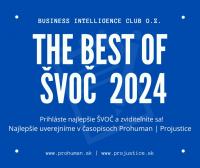Percepcia erotického motívu printovej reklamy Dolce & Gabbana a Calvin Klein z hľadiska genderovej diferenciácie zákaznicníckého segmentu generácie Y
Abstract:
Perception has long been considered the most significant barrier to effective communication. Correct information decoding is, in fact, dependent on the perception of communication content by the customer segment. The problem is that target groups may be submitted to the same incentives, but the interpretation of the incentive itself is an individual process based on the individuals, their needs, values and characteristics. Due to the diffusion of perception, it is necessary to understand the perception of communication contents by the target group. The presented contribution discusses the perception, by the generation Y customer segment, of erotic themes in selected print advertisements by Dolce & Gabbana and Calvin Klein. By psycho-semantic method of semantic differential it reflects the attitude of the generation Y demographic segment in Slovakia to these advertisements with respect to gender differentiation.
Keywords: Perception. Erotic theme. Print advertisement. Generation Y.
Abstrakt: Percepcia je dlhodobo považovaná za najvýznamnejšiu prekážku efektívnej komunikácie. Správne dekódovanie informácií je totiž závislé na vnímaní obsahu komunikácie zákazníckym segmentom. Problémom je, že cieľové skupiny môžu byť podrobené rovnakým podnetom, ale samotná interpretácia podnetu je individuálny proces založený na jednotlivých osobách, ich potrebách, hodnotách a vlastnostiach. Vzhľadom na difúziu percepcie, je potrebné pochopiť percipovanie komunikačných obsahov cieľovou skupinou. Predkladaný príspevok pojednáva o percepcii erotického motívu vo vybraných printových reklamách spoločností Dolce & Gabbana a Calvin Klein zákazníckym segmentom generácie Y. Psychosémantickou metódou sémantického diferenciálu reflektuje aký postoj má k týmto reklamám demografický segment generácie Y na Slovensku vzhľadom na jeho genderovú diferenciáciu.
Kľúčové slová: Percepcia. Erotický motív. Printová reklama. Generácia Y.
Introduction
The range of contexts, in which erotic themes in advertisements for selling products and services is currently used, is enormous. Its application with the aim of mediation of commercial communication is preferred. Its use in advertisements tends to earn “interest” from sexual information in terms of creating interest in the brand. Its task is to attract attention, and several authors (M. Košková, 2013, T. Koprda, 2015, D. Kubaľáková, 2015) warn that it can be used for the sale of 'unnecessary products'. Nudity, uncovered bodies, and ambiguity, in addition to a coveting or adorning effect can grab attention, but there could be a risk of distraction from the actual advertisement message. The aspects of using erotic themes in advertisement mentioned above are reflected by M. R. Brown et al. (2004), mentioning the fact that erotica represented by images that clearly record adults in various stages of undressing, engaged in obvious sexual activity, aims to provoke. Provocation is becoming one of the attributes of attracting the attention of the recipient through shock, and operates through three structures: ability to differentiate, ambiguity and transgression of social and cultural taboos (J. D. Williams, W. Lee, C. P. Haugtvedt, 2004, O. Bočáková, M. Lincényi, 2013). As T. J. Lambiase and Reichert (2012) mention, up to 73% of print ads with erotic themes associates the item being promoted with a tripartite of benefits in the so-called “buy formula”. Its content is a common thematic framework as: If you buy our product, (1) you will be sexually more attractive, (2) you will have more sex or better sex, (3) you will feel more attractive for your own good. The use of erotic themes is thus interrelated with a certain human dissatisfaction, with their imperfect “I”, while in the context mentioned above, the need to be perfect by buying sexually loaded product is evoked. Despite the fact that the erotic theme is used in many forms, it is not always ethical, necessary or adequately applied. Although it is evoking and unforgettable, it does not necessarily have to lead the customer segment to remember or buy the advertised product.
The research objectives
The aim of the implemented research was to determine how the generation Y customer segment perceives selected print advertisements. We were wondering how two advertisements by the companies Dolce & Gabbana and Calvin Klein are subjectively perceived. We observed what connotations cause bipolar adjectives by respondents related to research material chosen by us. We examined what attitude the research cohort would have to the given print advertisements and whether the semantic profile would vary depending on their gender differentiation.
Hypotheses
Regarding the given research objectives, we have set the following hypotheses:
The zero hypothesis H 1: We assume that the considered print advertisements with erotic themes will be perceived differently with regard to gender differentiation of generation Y respondents .
Alternative hypothesis H 1: We do not suppose that the assessed print advertisements with erotic themes will be perceived differently with regard to gender differentiation of generation Y respondents.
The zero hypothesis H 2: We assume that generation Y men perceive print advertisement with erotic themes more positively than generation Y women.
Alternative hypothesis H 2: We do not expect that generation Y men perceive print advertisement with erotic themes more positively than generation Y women.
Research material
Based on the implemented pre-research, we defined the research material. The pre-research was attended by 30 students of the Department of Mass Media Communication and Advertising, FP UCP in Nitra in the ratio of 25 women (average age: 20.5 years of age, SD = 0.83666) and 5 men (average age: 23 years of age, SD = 1.171893). Respondents were asked one open question in writing ('Enter two print ads with an erotic theme, which first comes to mind and briefly describe them'.), which was a part of the questionnaire. Based on their answers containing the description of the advertisements and, after processing the acquired data, we identified print ads with erotic themes, which became the subject of our investigation. They included print ads by Dolce & Gabbana (Fig. 1, N = 7) and Calvin Klein (Fig. 2, N = 7).
 Pic. 1: Advertisement No. 1 - Dolce & Gabbana
Pic. 1: Advertisement No. 1 - Dolce & Gabbana
 Pic. 2: Advertisement No. 2 - Calvin Klein
Pic. 2: Advertisement No. 2 - Calvin Klein
In addition to the two most frequent mentioned ads, respondents in smaller numbers reported print ads with erotic themes on Kinder Bueno (N = 6), Durex (N = 2), Axe (N = 2), Bruno Banani (N = 2), David Beckham Underwear (N = 1), Beyonce Heat -perfume (N = 1), Tom Ford (N = 1) and Dove (N = 1).
Research methods and research file
Psycho-semantic methods are one of the options on how to ascertain the connotative (subjective) relevance of the monitored items. These methods represent a connection of inter-individual consciousness, psycholinguistics and the psychology of perception. They make it possible to understand the experiencing of induced personality states, which are by other diagnostic methods hardly recordable. Despite the fact that they have idiographic meaning, they have found their use in marketing research (M. Džupina, E. Fandelová, D. Markechová, A. Tirpáková, 2013).
For monitoring the subjective meaning of selected marketing communications we used the semantic differential method, which consisted of 18 seven-point scales. Individual scales were formed by pairs of bipolar adjectives focused on the evaluation of dimensions, strength and activity. The following adjectives were used in the research: positive - negative, dynamic - static, active - passive, honest - dishonest, persuasive - unconvincing, weak - strong, right - wrong (or insulting – easy), moral - immoral, original - unoriginal, pleasant - unpleasant, pretty - ugly, justified - unfounded, sympathetic - unsympathetic, balanced - discriminatory, sexual – asexual, for young people - for all, intense - unique. 120 respondents participated in the research (N = 120), of which 87 (N = 87) were women and 33 (N = 33) were men. The average age of the research group was 24.6 years (SD = 2.38), women 24.5 years (SD = 2.45) and men 25 years (SD = 2.17).
The research results
The final findings did not indicate a different construction of the mental image of print advertisement No. 1 with an erotic theme, based on sex in generation Y. After analysis of the results of the collected observations of the marketing communication rating we did not find differences between women and men of generation Y (Table 1, Table 2).
Tab. 1: Differences in assessment of print advertisement No. 1 with an erotic theme based on gender

Tab. 2: Differences in assessment of print advertisement No. 1 with an erotic theme, according to gender

Closer analysis of the semantic space of print advertisement No.1 shows that both semantic profiles are copied (Chart. 1). With both the group of women and the group of men, we can observe a trend leaning towards positive adjectives. Women, unlike men, perceived print advertisement No. 1 as more dynamic and original. This argument is supported by the results of the t-test, where we rejected the zero hypothesis and adopted alternative hypothesis, that is that between the observations there is statistically significant difference at the significance level α = 0.95. Constructions of the mental image of print advertisement No.1 are very similar in women as well as in men of generation Y with regards to characterizing the advertisement as positive, passive, unfair, unconvincingly, strong, wrong, easy, moral, pleasant, nice, unfounded, sympathetic, discriminative, sexual, for young and intense.
Graph no. 1:
Semantic space of print advertisement No. 1 with an erotic theme, according to gender

The final findings showed the identical construction of a mental image of print advertisement No. 2 with an erotic theme, depending on the sex of generation Y. After analysis of the results collected during observation of the marketing communication rating we did not find differences between women and men of generation Y (Table 3, Table 4.).
Tab. 3: Differences in assessment of print advertisement No. 2 with an erotic theme based on gender

Tab. 4: Differences in assessment of print advertisement No. 2 with an erotic theme, according to gender
Closer analysis of the semantic space of print advertisement No.2 showed that both semantic profiles are copied (Figure - 8). With both the group of women and the group of men, we can observe a trend leaning towards positive adjectives. Constructions of a mental image of print advertisement No.1 are very similar in women as well as in men of generation Y with regards to characterizing the advertisement as positive, dynamic, active, unfair, persuasive, strong, wrong, easy, immoral, non-genuine, pleasant, nice, reasoned, sympathetic, equal rights, sexual, young people and intense.
Graph no. 2:
Semantic space of print advertisement No. 2 with an erotic theme, according to gender

Conclusion
For the needs of our research we conducted pre-research with 30 students from the Department of Marketing Communications and Advertising, FP, Constantine the Philosopher University in Nitra, aged 18-24 (Generation Y). The results showed that respondents remember print ads with erotic themes by Dolce & Gabanna and Calvin Klein the most. On the basis of the description, which respondents provided in the questionnaire, we were able to identify these specific print marketing advertisements with erotic themes. By employing this step, we defined the research material which became the subject of our research. Through the portal http://www.iankety.sk/ we created a questionnaire containing two visualizations of print ads with erotic themes by using a psycho-semantic method of semantic differential. This was then, by way of a generated link, sent to potential respondents. After the analysis of the collected results, we found out that our research sample consisted of 120 respondents (N = 120) of which 87 (nt = 87) were women and 33 (Nm = 33) were men. The average age of all respondents was 24.6 years (SD = 2.38), the average age of women was 24.5 years (SD = 2.45) and the average age of men 25 years (SD = 2.17). Based on the results, we calculated the average values and standard deviations of questionnaire assessments. Using the t-test, we then investigated the existence of significant statistical differences in the assessment of individual print ads with erotic themes by different sexes as well as the existence of significant differences in the perception of the individual items of the semantic differential. After the analysis of the results of the t-test of the two print ads with erotic themes, we concluded that there is no statistically significant difference between the assessment and the perception of men and women in the generation Y customer segment. Statistically significant differences were captured only in three items of semantic differential, which only accounts for 5.5 % of all bipolar pairs of adjectives. On the basis of the results' summary, we reject the zero hypothesis No. 1 and, therefore, we can conclude that the assessed print marketing advertisements with erotic themes were not perceived differently with regard to the gender differentiation of respondents of generation Y. The results of our research also show that, in both cases, women perceive the print advertisement with erotic themes more positively than men and therefore we reject zero hypothesis No. 2 and No. 3 and we adopt the alternative hypotheses. The research findings suggest that customer segment of generation Y perceives print ads with erotic themes with more positive connotations.
Authors:
Mgr. Ivana Polakevičová, PhD.
Mgr. Petra Uhríková
BIBLIOGRAPHY
BOČÁKOVÁ, O. - LINCÉNYI, M. 2013. Úvod do sociálnej a politickej komunikácie. Trenčín : TnUAD, 2013. 109 s. ISBN 978-80-8075-613-0.
BROWN, M, R. ET AL. 2004. The effect of provocation in the form of mild erotica on attitude to the ad and corporate image: Differences between cause-related and product-based advertising. In Journal of Advertising. ISSN 0091-3367, 2004, vol. 33, no. 1, p. 69-82.
DŽUPINA, M. – FANDELOVÁ, E. – MARKECHOVÁ, D. – TIRPÁKOVÁ, A. 2013. Sensing of social responsibility and age. In Analysis and research in marketing communication. ISSN 1339-3715, 2013, vol. 1, no. 1, p. 41-51.
KOPRDA, T. 2015. Teoretické konštrukty spotrebiteľského správania v marketingovej komunikácii. In: Nové výzvy masmediálnej a marketingovej komunikácie IV : recenzovaný zborník príspevkov zo 4. ročníka vedecko-odborného seminára, Nitra 3.10.2014. Nitra : UKF, 2015. ISBN 978-80-558-0756-0.
KOŠKOVÁ, M. 2013. Scenography and its communication value in print advertisement. In Analysis and research in marketing communications. ISSN 1339-3715, 2013, vol. 1, no. 1, p. 52-64.
KUBAĽÁKOVÁ, D. 2015. Vplyv ekonomických faktorov na spotrebiteľské správanie. In: Nové výzvy masmediálnej a marketingovej komunikácie IV : recenzovaný zborník príspevkov zo 4. ročníka vedecko-odborného seminára, Nitra 3.10.2014. Nitra : UKF, 2015. ISBN 978-80-558-0756-0.
REICHERT, T. – LAMBIASE, J. 2012. Sex in Advertising. Perspectives on the Erotic Appeal. New York : Taylor & Francis Group, 2013. p. 306, ISBN 978-08-05841-18-3.
WILLIAMS, J. D. – LEE, W. – HAUGTVEDT, C. 2004. Diversity in Advertising. England : Lawrence Erlbaum, 2004, p. 472, ISBN 978-08-0584-794-9.
Grant Support
* The study is a partial output of the project Vega 1/0216/15 Celebrities in the social advertising and their preference by adolescents.
























